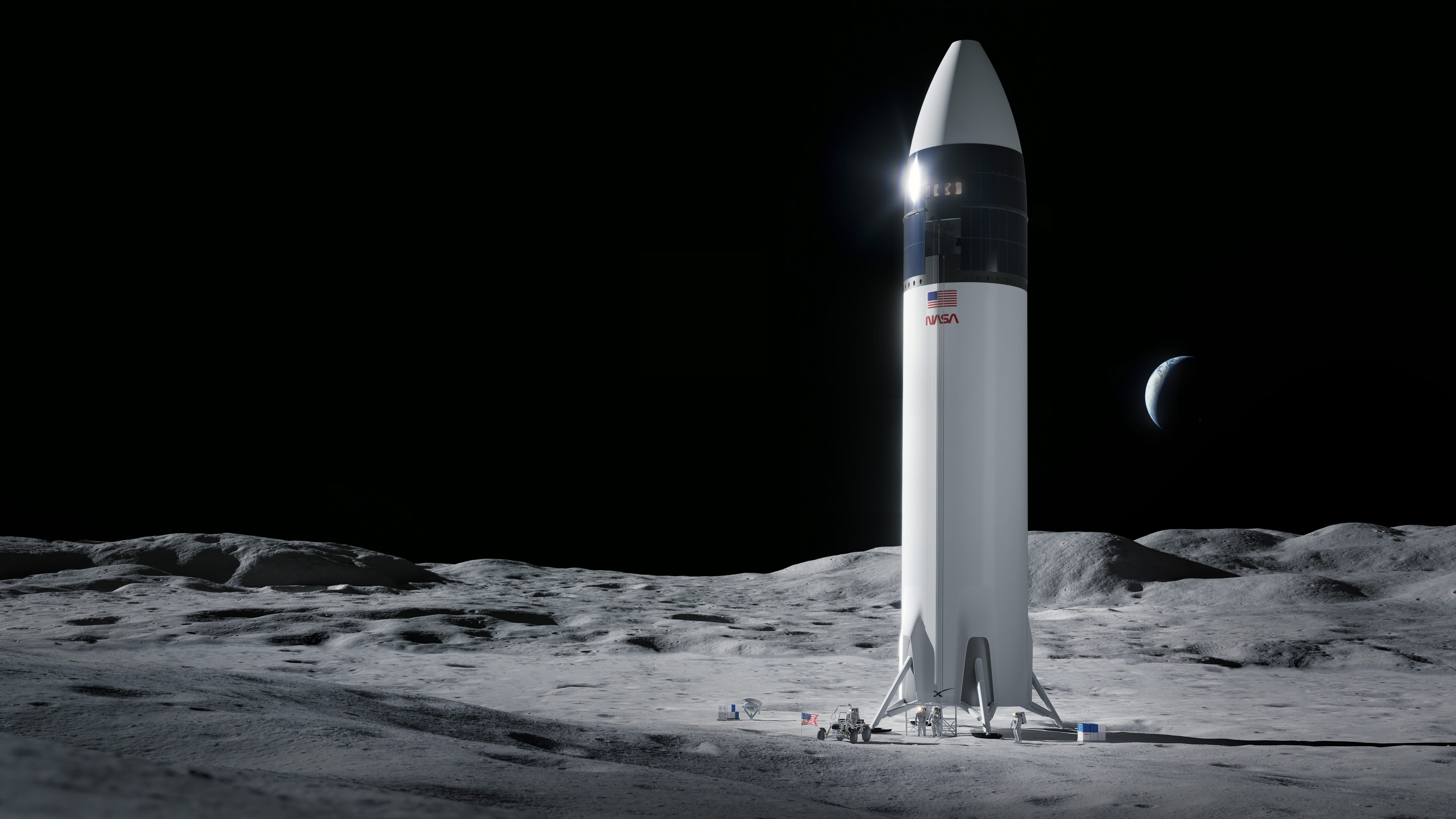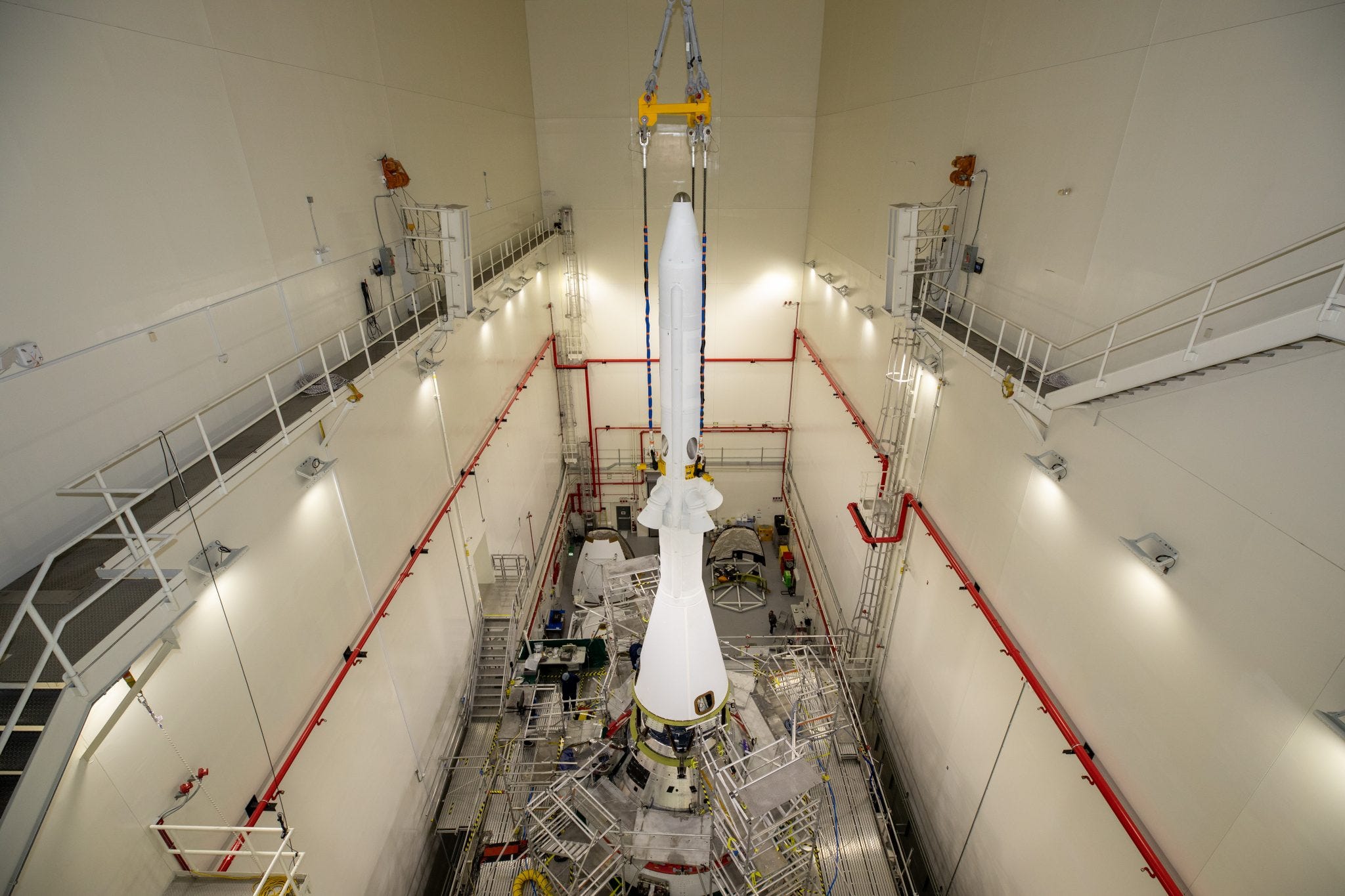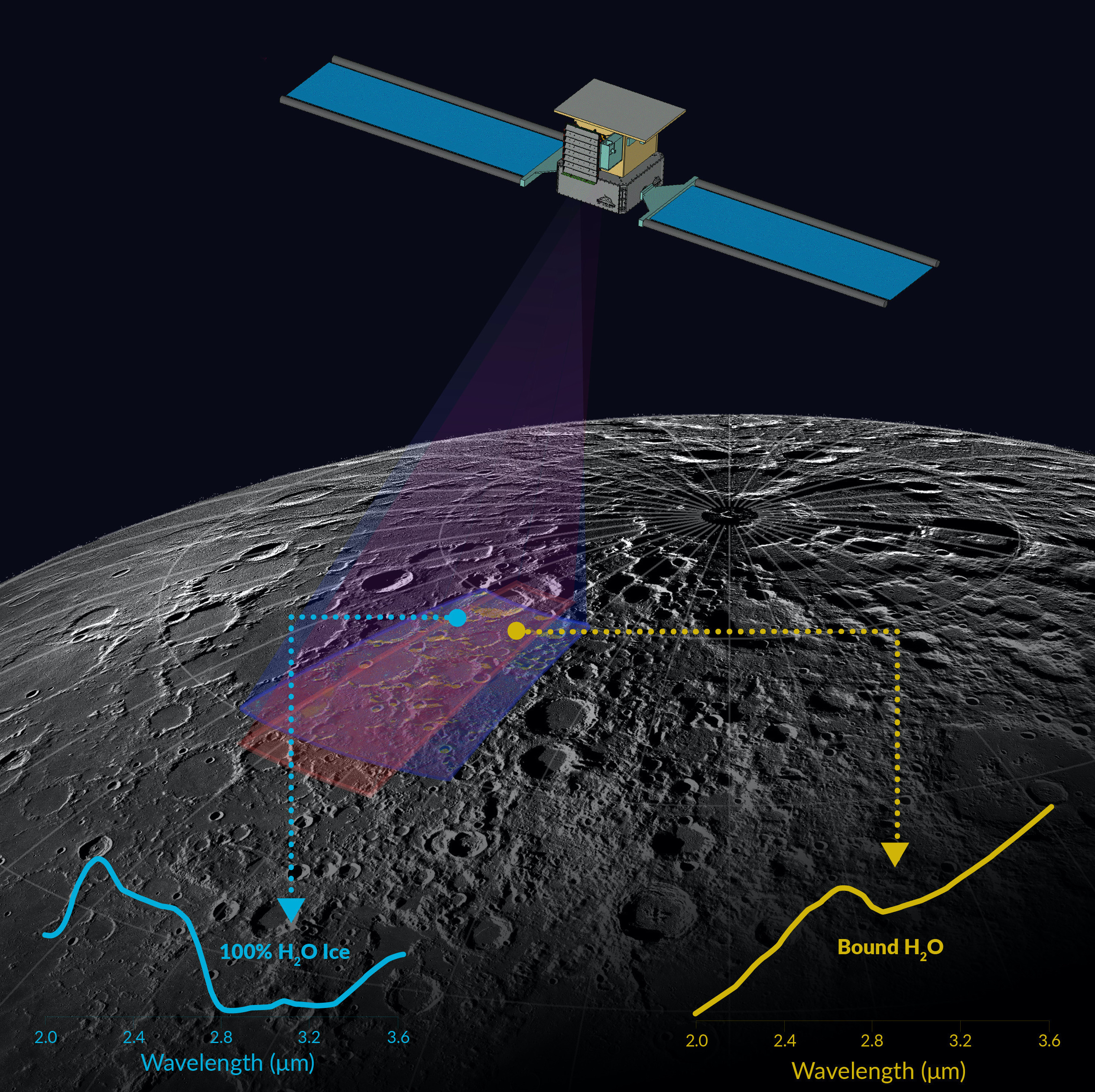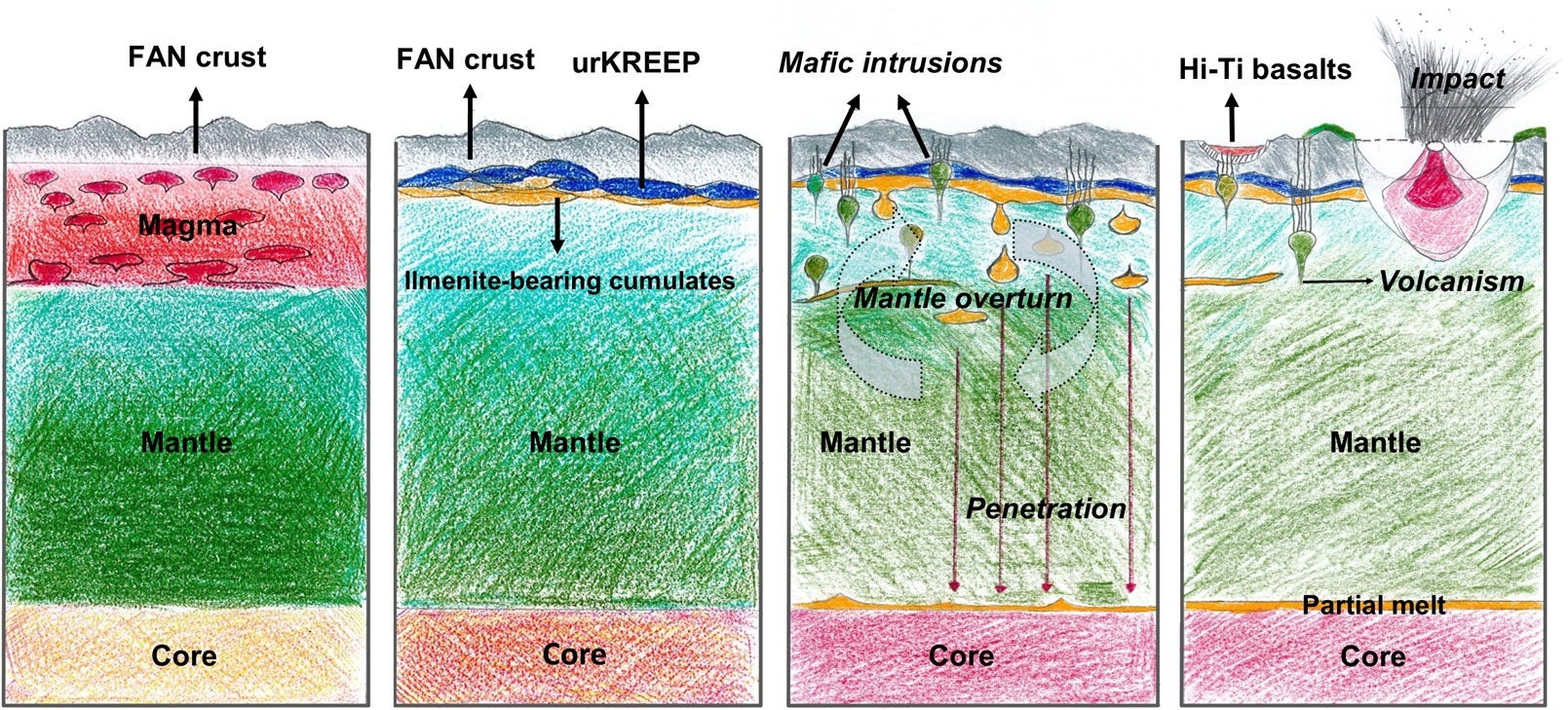Moon Monday Issue #38
SpaceX cleared to land NASA astronauts on the Moon as Amazon founder offers a $2 billion discount to NASA, insights into the Moon's ancient magma ocean and water, and lots of global lunar updates.
At about 2,000 words, this is the longest Moon Monday issue ever. So much has happened in lunar exploration and science in just one week that writing about it filled me with joy and hope for the future. And I hope you feel the same reading it. 🌝
Highlight
The U.S. Government Accountability Office (GAO) has denied the protests filed by Blue Origin and Dynetics against NASA’s selection of SpaceX as the sole provider to land the first Artemis astronauts on the Moon in this decade. The decision legally enables NASA to award SpaceX the nearly $3 billion contract. The GAO concluded that NASA didn’t violate any procurement law or regulation when choosing SpaceX, that the number of awards were always subject to funding available, and that the agency wasn’t required to engage in discussions with other providers due to lack of funding. The GAO says the full document of its evaluation will be made public on gao.gov after removing any proprietary or sensitive information.

Meanwhile, Amazon founder Jeff Bezos has offered a $2 billion discount to NASA to get the Human Landing System contract. In an open letter to NASA administrator Bill Nelson, Bezos says he is ready to bridge the funding gap, that didn’t allow selecting the Blue-Origin-led National team, by shaving off $2 billion from their original $6 billion proposal. He adds that Blue Origin will also fly its lunar descent element in low Earth orbit as a precursor flight to the robotic and crewed landings to further increase the system’s safety and reliability. While this may not be a bad offer, I agree with Eric Berger when he said, “The time to state how much skin you're willing to put into the game is during the bidding process, not after the winners have been named.” While the NASA administrator hasn’t yet commented on Bezos’ offer, he is optimistic about getting funds from Congress to select another provider to maintain competition for the first crewed landing.
NASA released a statement regarding the GAO’s decision, noting that it will now allow NASA and SpaceX to establish a timeline for the first Artemis crewed landing. The same statement also notes that the uncrewed Artemis I mission to go around the Moon and come back is on track for launch this year.
Exploration
NASA has joined the launch abort system to the Orion spacecraft as of July 23 for the Artemis I mission, the former designed to steer the Orion capsule away from the SLS rocket in an accidental event. However, NASA has decided to not keep the launch abort system functional for this uncrewed mission, citing previously successful tests to be adequate. Next, NASA will house Orion in a protective fairing and then stack the integrated system on top of the SLS rocket, completing all the mission elements.

After launch of the SLS rocket for Artemis I, the second stage will fire its engine to push the connected Orion spacecraft out of Earth orbit and on a trajectory to the Moon. It’ll then separate from Orion, and deploy 13 small spacecraft on independent scientific missions. After recently integrating five of those shoebox-sized spacecraft on the top part of the second stage, NASA has now integrated four more spacecraft.
- The Team Miles CubeSat, one of the three citizen science teams chosen as part of NASA’s Cube Quest Challenge to fly on Artemis I, aims to autonomously travel at least 96 million kilometers in deep space while using plasma propulsion.
- The Japanese EQUULEUS spacecraft will fly to the Earth-Moon Lagrangian Point L2—where the Earth’s and Moon’s gravitational pulls roughly balance—to study Earth’s plasmasphere. It will also measure meteor impact flashes and the dust environment around the Moon, providing additional important information for safe human exploration.
- The Japanese OMOTENASHI aims to demonstrate a semi-soft Moon landing with a 12-kilogram spacecraft! Its primary objective is to test technologies and trajectory maneuvers for safe lunar landing by small spacecraft. If successful, OMOTENASHI will be the smallest spacecraft ever to touchdown on the lunar surface, and make Japan the fourth nation to achieve the landing feat.
- The Italy provided ArgoMoon will provide a view of the SLS rocket’s second stage in space, provide data on the deployment of the other satellites, and test optical communications between it and Earth.
- Another payload onboard BioSentinel will be the first small satellite to perform a biological experiment in deep space. It will enter a solar orbit, and measure the impact of space radiation on yeast over 6 months. The researchers chose yeast because human cells and yeast cells have many similar DNA damage and repair mechanisms. Earth-bound research can’t fully simulate the unique radiation environment of deep space so this study will give us new insights on the deep space radiation effects on biological life as NASA seeks to establish long-term human exploration of the Moon with its Artemis program. The launch team has placed the yeast in a controlled environment, and will put them on the BioSentinel spacecraft onboard the rocket when closer to launch.
Chandrayaan 3, India’s second attempt to land on the Moon after Chandrayaan 2 failed, is now postponed to Q3 2022 from early 2022. In a written response to the Lok Sabha—the equivalent of the U.S. House of Representatives—Union minister Jitendra Singh shared the new launch date and blamed the COVID-19 pandemic for the delay. Being a repeat attempt of Chandrayaan 2’s surface part of the mission, the landing region and scientific objectives of Chandrayaan 3 are expected to be similar. The lander will carry, among other experiments, a thermal probe and a seismometer to study the Moon’s interior, and the rover will carry a pair of spectrometers to determine what the ancient lunar crust is made of.
Extending NASA’s commercial model, the agency published a draft request for proposal on July 27 to ready commercial companies to compete for the agency’s future purchase of spacesuits. NASA will continue to build their in-house suits with traditional government contracts but will simultaneously use the commercial suits and associated hardware at the International Space Station, the Gateway lunar station, and for Artemis lunar surface missions. On the Moon, the suits will be used for walking, driving rovers, collecting samples, and conducting other research activities. Responses are due on August 17, 2021, and will inform the formal solicitation later this Fall. NASA anticipates making one or more awards in Spring 2022, and plans to have at least one spacewalk demonstration with a commercial suit by 2023.
On July 15, NASA’s Lunar Trailblazer mission successfully passed Critical Design Review, meaning the team can now proceed to build the full spacecraft. Using its two instruments, Lunar Trailblazer aims to map from lunar orbit the form, abundance, and distribution of water on the Moon, including in permanently shadowed regions and in the sunlit areas. The mission is expected to provide holistic insights on the lunar water cycle, which is currently poorly understood. The spacecraft is expected to be ready in October 2022 but its launch is currently scheduled for 2025 as a secondary payload along with NASA’s IMAP mission. The mission team and NASA are looking into earlier launch options.

According to a newly published paper, China is developing a lunar relay satellite for Chang’e 7, which will land on the Moon’s south pole around 2024, and other future surface missions to use to communicate with Earth. China currently communicates with their Chang’e 4 lander on the Moon’s farside via Queqiao, a relay satellite at the Earth-Moon Lagrange Point L2 about 65,000 kilometers beyond the Moon. Queqiao isn’t expected to last through the decade, and so the new relay satellite with its nominal 8-year mission will serve future missions to the lunar poles and the farside. However, the new satellite will be in an elliptical orbit around the Moon and so won’t provide all-time coverage. China might deploy another relay satellite if 100% coverage is required. The paper proposes developing a Chinese lunar communications and navigations infrastructure around the Moon, similar to Europe’s Moonlight initiative, to efficiently serve the expected increase in robotic and crewed missions as China and Russia set out to co-build a scientific lunar base.
Eric Berger reports that Blue Origin is working on in-situ-resource-utilization technologies to enable sustainably living on the Moon. Along the same lines, they hired Austin Murnane, a space resources law expert who wrote a 40-page article in 2015 arguing that commercial space companies should be free to use resources from the Moon, asteroids, and other bodies, and not be controlled by terrestrial governments or the United Nations and the Outer Space Treaty.
NASA is asking U.S. universities to submit proposals for advancing early-stage groundbreaking technologies via the “Lunar Surface Technology Research (LuSTR) Opportunities” program. NASA seeks proposals in the following four technological areas: Autonomous systems for excavation and site preparation, lunar regolith mineral beneficiation (size reduction), cold-temperature analog integrated circuits, and novel heat transfer fluids. NASA will, in May 2022, award up to $2 million per winning proposals for research work spanning 1-2 years.
Science
Our leading hypothesis of how the Moon formed suggests that it must have soon after been encompassed in a vast magma ocean at least 500 kilometers deep. With time, this magma ocean crystallized and formed the lunar mantle and crust. Volcanic samples returned from the surface of the Moon allow us to study its interior and early evolution. A new study of magnesium-suite samples—which likely come from the lower mantle—brought by Apollo 17 determined its crystallization age to be 4.33 billion years old, very close to the crystallization of the putative magma ocean. The results suggest that the lunar magma ocean’s solidification overlapped with magnesium-suite-samples’ magmatic (internal lava flows) and related volcanic activity.

The Moon has literal faults all over it. Most of them are young, which suggests the Moon is shrinking. Many of these faults can be seen in the form of wrinkled ridges scattered across lava plains on the Moon. Using the 5-meter resolution stereo camera on India’s Chandrayaan 2 orbiter and data from NASA LRO’s laser altimeter, scientists have better mapped the structure of the prominent 220 kilometers long wrinkled ridge Dorsa Geikie. This gave them a better insight into the crustal stresses in the region and when the feature formed. Such studies are important to understand how the Moon has shrunk over time.
Australian startup CD3D PTY and RMIT University have received a grant from the Australian Space Agency to advance a ground penetrating radar prototype, which despite being ten times smaller than existing systems can see almost twice as deep below the surface. This is because it operates in a different frequency range: using the magnetic component of electromagnetic waves rather than the electric one common for radar systems. Once the prototype advancement work is done, the teams will test the technology’s usefulness by scanning one the world's largest accessible lava tubes at the Undara caves in Queensland, Australia. The Australia Space Agency wants to eventually send such a radar to the Moon on an orbiter or a rover to better map minerals, water ice deposits, and subsurface lava tubes so as to progress towards living on the Moon.
More Moon
Dear reader, I’m publishing this one-of-a-kind Moon exploration newsletter for free, with no ads. And it will stay that way. If you like my coverage of global developments in lunar technologies and science, support me to keep it going. I’m trying to sustain this newsletter as a purely reader-funded one. As such, every boost counts. I also do Moon popularization to get more people excited about all things lunar! 🚀
